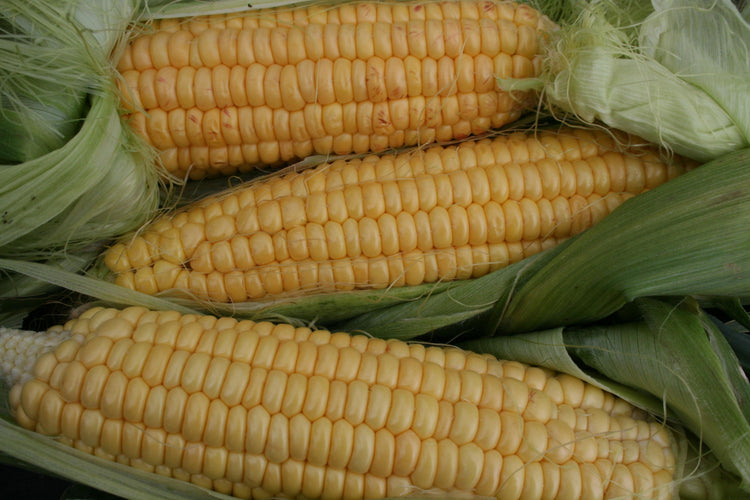
Simonet is a Canadian corn, which was developed by Rob Simonet of Edmonton in 1920. It is a short season variety with short stalks growing only to 1.5m (5’) tall. Simonet produces plump 15-16cm (6”) ears and yields 8-14 rows good corn flavor, sweet when picked and eaten straight away. Like many true open-pollinated corns, they convert their sugar to starch more rapidly than hybrids. Simonet has a remarkable resistance to rot in cold soils. There are 2 cobs per stalk and the tassels and silks are either blond or red. Cobs are set very close to the ground. Harvesting usually takes place in the beginning of August
Growing Instructions:
Corn is a warm-season crop that is easy to grow from seed. It requires full sun and fertile, well-drained soil. Plant corn when the soil temperature has warmed to at least 10°C (50°F), usually around mid to late spring. Plant seeds 2.5-5cm (1-2”) deep, spaced 15-20cm (6-8”) apart in rows spaced 75-90cm (30-36”) apart. Corn is wind-pollinated, so plant it in blocks or at least four rows close together to ensure good pollination. Water deeply once or twice a week, depending on rainfall. Corn plants can grow up to 2m (6.5ft) tall, so provide support for tall varieties. Fertilize with a balanced fertilizer once or twice during the growing season, or use a slow-release fertilizer at planting time. Corn is ready to harvest when the silks turn brown and the kernels are plump and milky. Test a kernel by pressing it with your thumbnail; if a milky liquid oozes out, the corn is ready to harvest. Harvest corn by pulling the ears down and twisting them off the stalk. Corn tastes best when eaten immediately after harvesting.
Soil Conditions: Fertile, well-drained soil. Soil pH: 6.0-6.8. Planting Depth: Plant seeds 2.5-5cm (1-2”) deep. Germination: 7-10 days. Height at Maturity: Up to 2m (6.5ft) tall. Days to Maturity: 60-100 days, depending on the variety. Watering: Water deeply once or twice a week, depending on rainfall. Sun/Shade: Full sun. Spacing after Thinning: Thin seedlings to 20-30cm (8-12”) apart.
